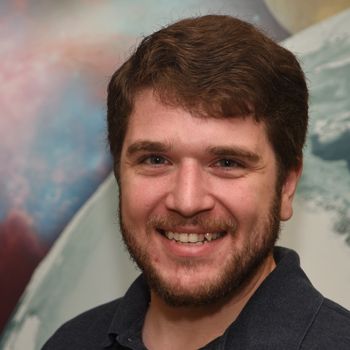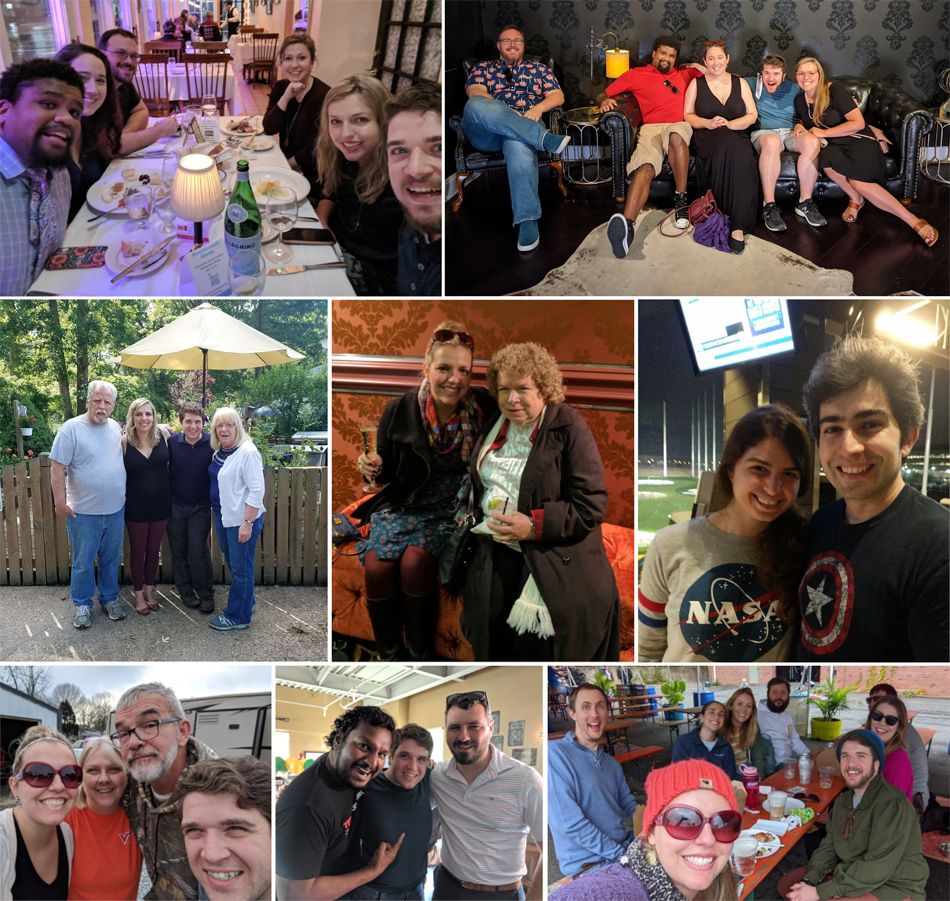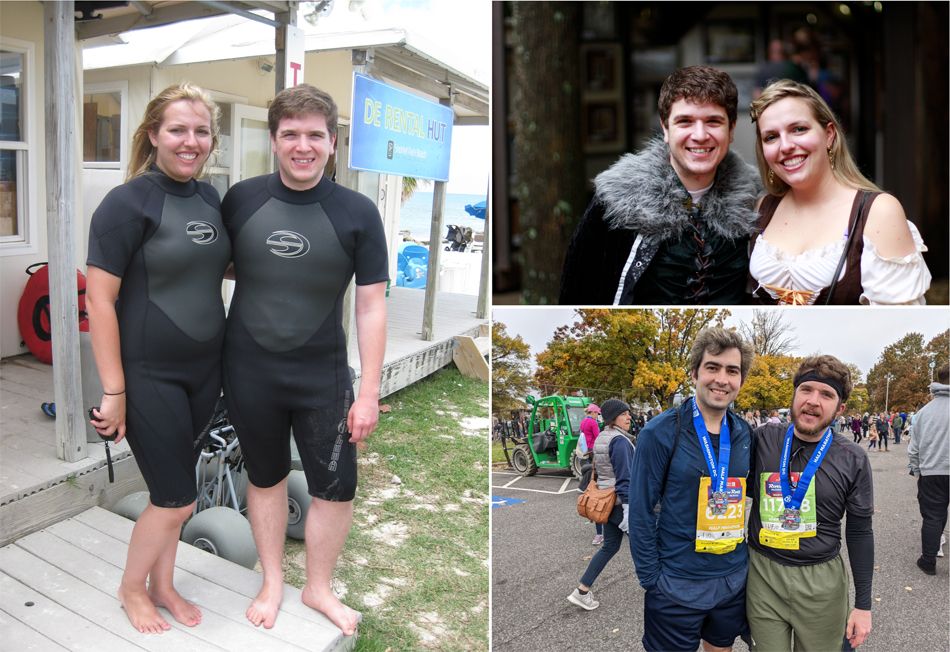Early Career Scientist Spotlight
Dr. Joe Renaud (he/him/his)
Planetary Scientist
Planetary Geology, Geophysics and Geochemistry Laboratory (698)
What science questions do you investigate, and what methods do you use to study them?
I study the interiors of planets and moons both inside our Solar System and beyond. I use simulations and models to examine their thermal evolution, particularly in the context of tidal heating. On Earth, we are familiar with the tides causing our oceans to rise and fall twice each day, but what is less obvious is that the same forces drive the entire interior of Earth to move and deform. This churning and flexing on other worlds can be so intense that the resulting friction is capable of heating them to the point of melting ice and even rock. For Saturn’s moon Enceladus, we believe that tides are generating enough heat to partially melt its southern icy hemisphere, leading to dramatic plumes of water spewing into space. The effect of tides on Jupiter’s moon Io is even more catastrophic with extensive and frequent volcanoes that constantly cover the surface of the moon with lava.
Tides provide a unique conduit to extract the energy locked in a planet or moon’s orbit or rotation and dissipate it into internal heat and deformation. Beyond heating, this mechanism can also cause an elliptical orbit to become circular, or a quickly spinning planet to slow down. In fact, this has occurred on Earth. In the distant past, a single day used to be much shorter, perhaps only a half-dozen hours long; tides have slowed Earth's rotation over time, increasing the day’s length to our modern 24 hours. In the future, Earth's day will continue to grow, potentially reaching an equilibrium with our Moon where one day will last an entire month. At that time, the Moon will be locked above only one hemisphere of Earth, meaning the entire opposite side will never see the Moon in the sky!
To figure all of this out, I must balance a lot of different disciplines: orbital mechanics, thermal dynamics, and even the geology of rocks and chemistry of ices which ultimately govern how effectively these tidal forces can be converted into heat. All this physics must be integrated into computer models, so I spend a lot of my time programming and running simulations.

How did you end up working at NASA Goddard?
As an undergrad, I thought I wanted to study particle physics (if not totally switching careers into Theater or pure Math), but I fell in love with planetary science. After some initial bumps in graduate school, I eventually started working with an amazing dissertation chair, Dr. Joe Weingartner, who introduced me to a NASA Goddard scientist, Dr. Wade Henning, who was looking for a student to help him on several projects. I began working with Wade on problems in tidal physics, splitting my time between George Mason University, where I taught undergraduate courses, and NASA Goddard, where I conducted much of my research. Having the opportunity to spend a good chunk of my time at Goddard during my Ph.D. allowed me to meet and interact with many of the scientists who are now my colleagues. After I graduated, I applied to the NASA Postdoctoral Program (NPP) to continue my work on tides and planetary interiors. It took me a couple of tries, but I was excited to be awarded an NPP position in the Fall of 2019. The support of amazing mentors like Joe and Wade opened a lot of doors for me. I have also been so lucky to have a great network of friends and family who are always there for me.
Credit: Joe Renaud
What is a scientific fact that you find amazing?
Our Moon is slowly moving away from us, currently at a speed of about 1.5 inches per year. At that rate, a billion years ago, it would have been 10% closer to Earth, making it appear larger in the sky. Likewise, a billion years from now it will be further away and appear smaller. We just so happen to live in the few 100-million-year period where the Moon is at a distance where it appears to have the same size in the sky as our Sun. The similar apparent size is what allows total solar eclipses to be possible. In the far future and the distant past, a perfect solar eclipse could not have occurred!
For my specific research, I also find it amazing that the quantum mechanics and physics of microscopic grains in rocks and ice can ultimately govern the way an entire planet’s orbit changes over millions of years. Minor changes on the atomic scale could cause a moon to crash into its planetary host, or it could mean the difference between an exoplanet being habitable or inhospitable.
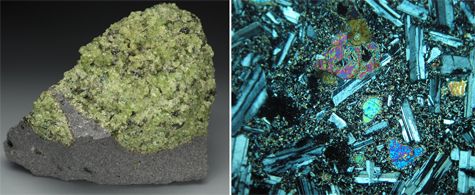
Credit: L: Tony Peterson / MinDat.org; R: Dexter Perkins / Uni. of North Dakota
What aspects of your work are you most passionate about?
By far the most rewarding part of my job is working alongside other early career scientists here at NASA Goddard. As soon as I arrived, I was eager to get involved with Goddard’s early career association, NGAPS+. I love connecting people and making sure everyone feels supported and that their questions and concerns are being addressed. These are all part of NGAPS+’s core mission, which is what drove me to participate. My passion for sharing information has grown to the point where I am now known as the “Oh, another email from Joe” guy.
The most important work I do with NGAPS+ is assisting and supporting the group’s diversity, equity, and inclusion (DEI) subcommittee. This volunteer team works tirelessly to help NASA’s diverse early career workforce. This includes compiling resources and answers to common questions, sharing tips and tricks for those new to NASA or the US, and bringing DEI concerns to Goddard’s management.
Lastly, I am very passionate about mentorship and introducing students to new areas of research. I have been very lucky to mentor several undergraduate and high school students over the years on various projects. I think getting involved with research as early as you can is the best way to learn what kind of topics and methods you enjoy working on, so it was a thrill to introduce the world of research to these students and, even more important, to learn from them how to be a more effective mentor. I look forward to mentoring new students and scientists in the coming years.
What early career advice do you have for those looking to do what you do?
My top three pieces of advice:
- Cold call (or email) people who are doing work that you think is cool. Share your interests and say you are looking for ways to get involved. It is shocking how often random emails or quick conversations at a conference turn into future collaborations and job opportunities. Don’t get discouraged if they don’t respond at first, keep trying!
- Build a professional website and make sure when someone looks up your name on search engines that your website appears near the top of the results. Share your personality, interests, skills, and recent work. Include a copy of your resume or CV and keep it up to date when applying to new positions. Last, but most important:
- When a topic, advisor, or even whole institution is not working out: consider leaving or changing things up. Often people try to stick out a bad situation longer than they should but that can be very damaging for their mental and physical health not to mention making their work-life miserable. In graduate school, I did not click with my first Ph.D. advisor, so I ended up switching halfway through. It pushed my graduation date back by about a year, but it was the best decision I have made so far in my career.
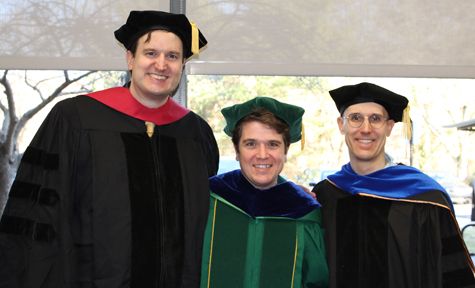
Credit: Jessica Teaford
What do you like to do in your free time?
I love renaissance faires and have missed them dearly during quarantine. My fiancé and I love to travel, explore, cook, bake, play board & computer games, and listen to movie scores. We are also both wine aficionados, a difficult job that we take very seriously. Over the pandemic, I got back into long-distance running which hasn’t killed me yet.
Credit: Jessica Teaford
If you were to expand your current research focus, what new topics would you explore?
Much of my scientific career has revolved around the theoretical modeling of the interiors of rocky & icy moons and planets. This work has enabled better predictions of various parameters that can be observed from telescopes and satellites. However, I have not had the chance to work directly with a team on the development and implementation of a mission or instrument that can actually take these measurements. I am looking forward to gaining experience in instrument design and development. I am also very excited about working with data collected by upcoming missions like NASA’s James Webb Space Telescope (JWST) and the Europa Clipper.
Biography
Home Town:
Fredericksburg, Virginia
Undergraduate Degree:
B.S. Physics, George Mason University, Fairfax VA
Post-graduate Degrees:
M.S. Engineering Physics, George Mason University, Fairfax VA
Ph.D. Physics, George Mason University, Fairfax VA
